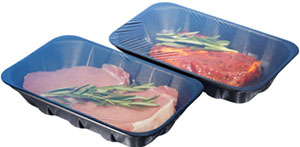Modified atmosphere packaging application - fish and fish products
Modified Atmosphere Packaging Application - Fish and Fish Products
Post Time: 15 October 2020

There has been a very significant increase in the sale of MAP fish products in Europe and particularly in the UK. Nevertheless, packaging technologists should be aware of a major concern limiting the development of MAP, namely C. botulinum. There is also debate about the cost benefits of MAP, since in some applications only relatively small increases in safe shelf life have been reported. Spoilage of fish results in the production of low molecular weight volatile compounds, therefore, packaging technologists need to consider the odour barrier properties of packaging films and select appropriate high-barrier materials for packaging strong flavoured fresh, smoked and brined fish and fish products.
Spoilage of fish and shellfish results from changes caused by three major mechanisms: (i) the breakdown of tissue by the fish’s own enzymes (autolysis of cells), (ii) growth of microorganisms, and (iii) oxidative reactions. MAP can be used to control mechanisms (ii) and (iii) but has no direct effect on autolysis. Because autolysis is the major cause of spoilage of fish and shellfish stored at temperatures close to 0°C compared with the activities of bacteria, this may explain the reduction in benefits achieved from MAP of fish compared to other flesh products. MAP, while potentially inhibiting oxidative reactions, may be more effective at inhibiting microbial growth.
Oxidative reactions are much more important as shelf life limiters in fish compared with other flesh meat, because seafood has a higher content of polyunsaturated lipids. Storage temperature has a major effect on fat oxidation that occurs even at frozen temperatures. Note that salt addition can accelerate oxidative processes.
Generally, the major spoilage bacteria found on processed fish are aerobes including Pseudomonas, Moraxella, Acinetobacter, Flavobacterium and Cytophaga species. There are several microorganisms that are of particular importance when dealing with MAP fish products, these include C. botulinum. The aerobic spoilage organisms tend to be replaced by slower growing, and less odour producing, bacteria, particularly lactic acid bacteria such as lactobacilli, during storage.
Because fish and shellfish contain much lower concentrations of myoglobin, the oxidation status of this pigment is less important than that in other meats. Consequently, there is potential to use higher levels of CO2, e.g. 40%. Because of the high moisture content and the lipid content of some species, N2 is used to prevent pack collapse.
One of the concerns about MAP of fish is that removal of O2 and its replacement by either N2 or N2/CO2 results in anaerobic conditions that are conducive to the growth of protease-negative strains of C. botulinum. Because these bacteria can grow at temperatures as low as 3°C and do not significantly alter the sensory properties of the fish, there is the potential for food poisoning that can lead to fatalities. While there is no evidence that CO2 promotes the growth of psychotropic strains of C. botulinum, there are, as discussed previously, some concerns about CO2 promoting the germination of spores of this organism.
Considerable research has been undertaken to assess, and to control, the risks associated with the growth of C. botulinum in MAP of fish and other products. The Advisory Committee on the Microbiological Safety of Food (ACMSF) (Anon, 1992) have recommended controlling factors that should be used singly or in combination to prevent the growth of, and toxin production in prepared chilled food by, psychotropic C. botulinum. As far as MAP of raw fish products is concerned, risk can be effectively eliminated if storage temperature is held at 3°C or below and if the shelf life is limited to no more than 10 days.
Some fish processors include O2 in their MAP to further reduce the risk of growth of clostridia. Gas mixtures of 30% O2, 40% CO2 and 30% N2 are used for white non-processed fish, i.e. non fatty fish. While this will increase the shelf life of some fish and fish products, it would not significantly enhance the shelf life of oily or fatty fish. High, 40%, CO2 mixes along with 60% N2 are generally used for smoked and fatty fish. Because of the risks already discussed, it would appear reasonable to aim for a target shelf life of 10–14 days at 3°C.
[SECTION B MAIN FOOD TYPES, Michael Mullan and Derek McDowell]
Refer to: Modified Atmosphere Packing (Map) Machine